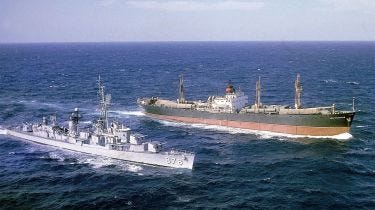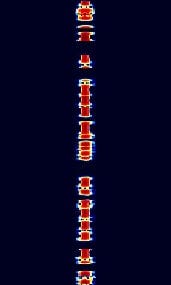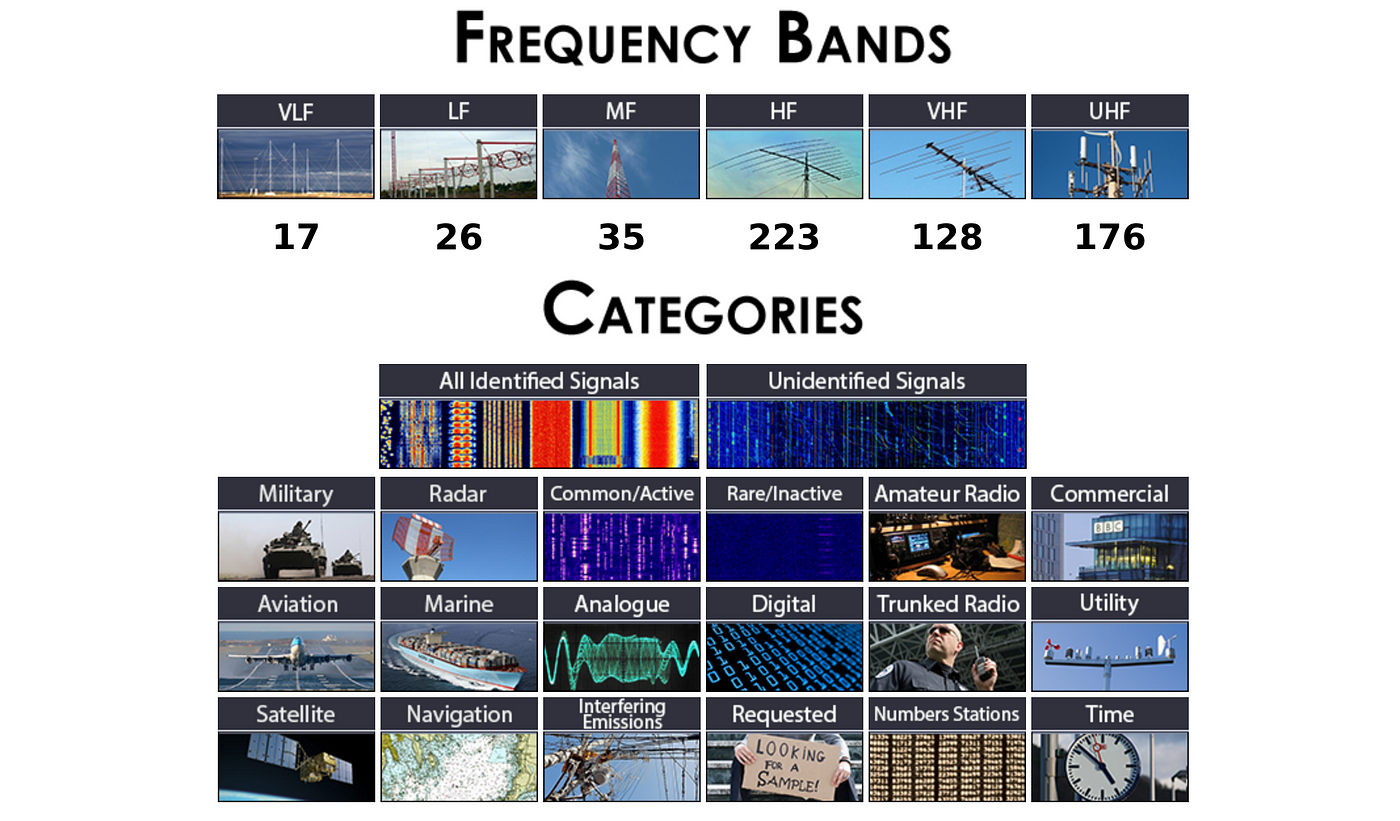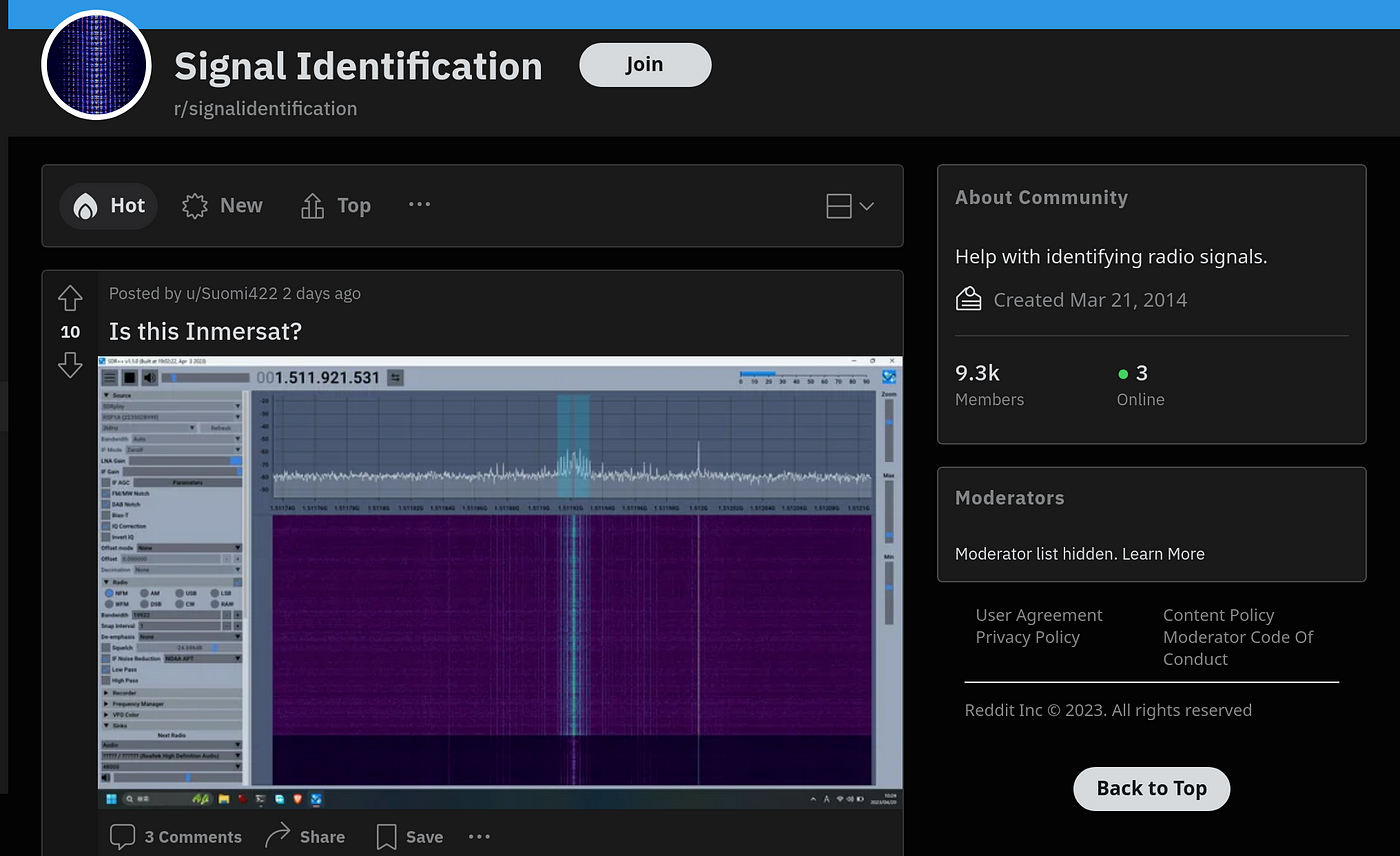SDR The Radio Spectrum & The World Around Us: Part 2
Part 2: Signals Identification & SIGINTWe spoke in part one about how you’re able to use a raspberry pi and SDR to search for RF based signals around you. Given that in part 3 we will be starting to show you how to set up your own signals Intelligence / Collection station we thought that in the next part of our series on software defined radio, we’d take a look at the art of SIGINT. We’ll also discuss some of the techniques that can be used to identify signals you might detect with your own SDR device. And we’ll also have a look at the importance of SIGINT in a military environment. But first, its over to Chat GPT for a random fact.
INPUT: Give me a little known fact about SIGINT, and a brief synopsis on why its important.
OUPUT: A little-known fact about SIGINT (Signals Intelligence) is that it played a crucial role in bringing an end to the Cuban Missile Crisis in 1962. The US was able to intercept and analyze Soviet communications, which revealed that the Soviets had no intention of launching an attack on the US, despite their deployment of missiles in Cuba. This allowed the US to avoid a military confrontation with the Soviet Union and instead negotiate a peaceful resolution to the crisis.SIGINT is important because it involves the collection, processing, and analysis of information contained in electronic signals and communications. This information can provide critical intelligence on the intentions and capabilities of foreign governments, military and other organizations, as well as help identify potential threats to national security. SIGINT is particularly valuable in modern warfare, where electronic communication systems are ubiquitous and can provide a wealth of information for military planners and decision-makers. It is an essential tool for national security agencies and military forces around the world. USS Vesole with Soviet Freighter Potzunov. Cuban Missile Crisis 22–10–62
USS Vesole with Soviet Freighter Potzunov. Cuban Missile Crisis 22–10–62
Thanks GPT. The input is appreciated as always. So firstly when we talk about performing or conducting signals analysis its important that we touch on legalities first. Whilst government and military don’t have to play by these rules and can intercept any and all traffic depending on circumstances, other investigators and researchers must remain within the confines of the laws that govern. Some countries take a dim view to even possessing a radio receiver so its important to check the legalities of your region to ensure you are staying compliant with the law.In decades gone, SIGINT was more performed by the government and military services rather than individuals. Although we should mention ham radio operators and shortwave enthusiasts have been performing sigint for decades, using favorable propagation and receivers to scan the bands and see what they are able to find. Ham’s have made many contributions to the development of civilization, with numbers stations and other High Frequency stations being monitored by RF Enthusiasts. We’ll touch on numbers stations and their histories in a later article, but suffice to say they are a fascinating experience when you’re able to find one transmitting live.However with the proliferation of both computing and radio receivers this has changed, with many open source analysts, researchers and even hobbyists conducting research and using receiving equipment that is anything but basic.In part 1, we spoke about how technology influenced the discovery and development of software defined radio and how that filtered down into everyday life. It’s fair to make the same claim about modulation types. Whilst digital transmission methods have been around for decades, its proliferated even more so since the turn of the millennium. Sensitive receivers and computer to computer transmission lead to modes like encrypted FM and low power WSPR. This means that whilst analogue transmissions could be intercepted by anyone with a frequency compatible radio, these newer methods either couldn’t be intercepted at all or if they could were far more complex to do than were previously seen. They also had the benefit of being far more efficient than a simple analogue signal, giving rise to the proliferation of electronic devices like phones, routers and bluetooth transmitters that we see in today’s world. This is due to the fact that now, a single chunk of spectrum could be used for far more efficiently than carrying a single and simple analogue signal. Whilst no one can ever claim an RTL SDR dongle is a high end radio device, like anything in life it comes with pros and cons. Whilst they can be prone to being slightly off frequency or easily overwhelmed by interference, it’s our opinion that they give a newcomer to radio the ability to cheaply attain one of the biggest benefits to SDR — the ability to see a signal as well as hear it.It’s hard to explain what an advantage this can be when you’re trying to identify a new signal or teaching yourself about how RF works. Whilst it’s not essential to use the waterfall to use the SDR its a great way to explore the world around you. More importantly, from a SIGINT perspective this is a great advantage to find out what you’re hearing and looking at, as it’s much easier to take a screen cap from a waterfall display than it is to try and explain a signal you’ve heard. To help get your head around this, we’ve included a screen cap of some morse code from a waterfall below. Simple Morse Code (CW) Displayed on Waterfall
Simple Morse Code (CW) Displayed on Waterfall
Modulation
Whilst modulation types are outside the scope of a single article, one thing you should know is that some things will always be present in any signal you receive. Whilst signal types can vary in how they appear visually, you’ll find at least a carrier wave that you can use to locate the exact transmission frequency and gives you a reference point to understand what type of signal you are looking at. When testing your environment you should notice many different modulation types that can be easily found around you. Probably the most obvious of these would be commercial radio stations, using a mixture of Frequency Modulation & Amplitude Modulation and Networking Devices which usually use some form of Phase Shifted Keying or PSK modulation. Some of these newer digital signals will sound like a scrambled noise to the human ear, similar to the dial up modems those of the older generation used to use to connect to the internet. Signals like this usually fall into two categories. Those that can be decoded with the use of addition tools and plugins, and those that can’t be decoded at all.
Identification:
1. DatabasesWhen you’re looking to identify a signal you’ve found, there’s a number of useful options available to you.The first place to start would be the sigid wiki. This extremely useful tool is a database of signals that allows you to both browse the database and search directly for different types of transmissions. Of particular interest is that there is a Known and Unknown section where you can look at captured transmissions for identification purposes. They also split it by band, and type which means you can search for military high frequency transmissions as easily as you can search for a military satellite downlink. And just on that for a moment, it might surprise you to know that you are able to receive certain satellite transmissions with nothing more than a handheld radio or your home built sigint station. It’s an effort that takes some coordinating but it is achievable. Brazilian pirate radio operators are known for taking up bandwidth on the US Military FLTSATCOM satellites using nothing more than lightly modified handheld and mobile radios. If you’d like to explore the sigid wiki, you can find it at https://sigidwiki.com Depending on your country of residence you may be able to find useful information on a spectrum allocation database or chart. These resources can assist you in finding what parts of the spectrum are allocated for what, as the ITU (International Telecommunication Union) will coordinate many frequencies worldwide. This means that parts of the spectrum like aviation and space communication allocations will often only vary by ITU region rather than country borders. You can find the american spectrum allocation chart at https://ntia.gov/page/united-states-frequency-allocation-chart
Depending on your country of residence you may be able to find useful information on a spectrum allocation database or chart. These resources can assist you in finding what parts of the spectrum are allocated for what, as the ITU (International Telecommunication Union) will coordinate many frequencies worldwide. This means that parts of the spectrum like aviation and space communication allocations will often only vary by ITU region rather than country borders. You can find the american spectrum allocation chart at https://ntia.gov/page/united-states-frequency-allocation-chartFCC Spectrum Allocation chart.
2. Social Media
Sometimes the best way to identify a capture is to harness the power of social media to do so. Whilst the ham radio community is small, there are some extremely active communities that enjoy the challenge of identifying new signals or assisting newbies with information that may be able to help. Reddit has an extremely active radio community which also covers the rtl sdr. Sub reddits that might be useful for this include r/amateur radio, r/stlsdr and r/signalidentification. These are places with active and lively communities that have an abundance of information in regards to sourcing knowledge or identifying a mystery transmission. If you’re going to post here though, remember good information will ensure success. Whilst a good recording with plenty of information is helpful, one of the best things to do is to take a screen capture of the signal on the waterfall of the SDR. This will be a great help in being able to source an answer for what type of mystery signal you might have. r/SignalIdentification Subreddit
r/SignalIdentification Subreddit
Signals Intelligence and the Military
Whilst this topic is a bit broad for a single paragraph, its pretty clear that SIGINT plays a distinct role in a military environment regardless of active conflict. We spoke earlier about the relevance of signals intelligence during the Cuban missile crisis however in today's connected world this is even more important. With the era of information warfare upon us, being able to perform signals analysis has become even more important, with many systems in play that aid the collection and processing of intelligence data. The end usage of this data spreads out into all branches of the military, some used for kinetic action, some used for further intelligence. Whilst much of this remains a classified dark art, we know each services has the ability to conduct covert signals intelligence via the use of various platforms for doing so. The EA-18 Growler is used by the navy, whilst the air force flies the RC-135 Rivet Joint as well as other various manned platforms and UAV’s. There’s even specially designed submarines for this job, with the USS Jimmy Carter (SSN23) well known as the current platform used for secret missions. Prior to SSN23, Surgeon Class submarine USS Parche (SSN683) received many awards for its intelligence gathering during and after the cold war. This cold warrior was given 9 Presidential Unit Citations for this work alone, including making an appearance in Operation Ivy Bells. Its a fantastic read if you’re interested in covert intelligence gathering. Mystery Boat: USS Jimmy Carter (SSN23) at Naval Base Kitsap
Mystery Boat: USS Jimmy Carter (SSN23) at Naval Base Kitsap
In Closing
So after today, you have a new way to identify signals you’ve found once you set up your SDR dongle and had a look at what’s being transmitted locally. You can also find a wide range of extra signal types and protocols that you can study, including information about what services are operating where, and with what modulation type. In part 3, We’ll have a look at how you can look at and track aviation assets including ACARS, ADS-B and general voice communications. We’ll also touch on generally navigating the SDR console, before closing out part 4 with some information on direction finding and physically geo locating signals of interest.If you missed Part 1 and would like to do revision and find where you can source a raspberry pi or sdr dongle, you can find the original link here






























